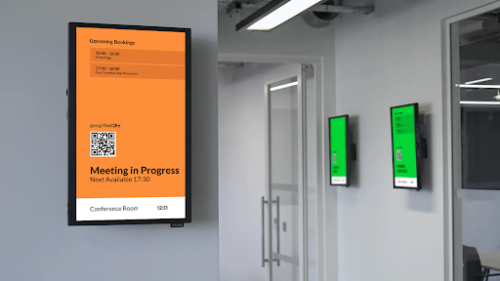
Do you want to set up or upgrade a digital signage network? Your choice of software will have a significant impact on how well you perform.
Choosing the correct digital sign software is a multi-step process requiring careful planning and consideration at each stage.
But before we explore how to select a good digital signage software, let’s look at what digital signage is.
What is digital signage?
Digital signage, also known as electronic signage, refers to display technologies such as LED walls (or video walls), projection, and LCD monitors to display webpages, videos, directions, restaurant menus, marketing messages, or digital images in vivid detail.
Digital signage provides wayfinding, messaging, marketing, and outdoor advertising in public spaces like museums, sporting arenas, churches, academic buildings, retail stores, corporate spaces, and restaurants.
What to look for in a digital signage solution?
Almost all digital signage systems require a software tool that allows users to manage the content displayed on the screens. Users can use these tools to perform various tasks such as scheduling content, organizing screens into groups, and creating playlists.
If you want to run an excellent digital signage network, here are some essential features you should consider.
Ease of use
Ease of use (or usability) should be a critical factor to consider when selecting the right software.
Finding the right software that is simple to use can help you manage the content of your project. No one wants to waste time and energy learning how to use the software. Instead, you’ll want one that allows you to get your project started quickly.
Easy-to-use software boosts user interaction with your product by improving the user experience.
Features
Of course, the main feature of digital signage software is enabling users to manage their digital signage content remotely.
So, you need a remote management system to control the software. Choose a cloud or web-based platform that is accessible from any internet-enabled device.
Besides, you should also look for advanced connectivity options and customization capabilities.
Platform Infrastructure
Some businesses do not limit themselves to a single type of signage platform. They will have a network of signage that includes wall displays, kiosks, video walls, and interactive screens.
One essential digital signage software feature for such organizations is supporting and controlling multiple platforms from the same login.
When weighing your options, prioritize platforms with stable software infrastructure and solid uptime. Otherwise, you will spend time on maintenance when the framework crashes.
Security
Since everything is digital, signage can be a target for hacking and other malicious online activity. Always be cautious not to expose your network – invest in a digital signage software platform that includes strict security features.
While taking physical measures to limit these individuals’ ability to gain access to your systems is an excellent place to start, make sure that your software solution can also lock out any unauthorized individuals who manage to gain access to your system.
Dynamic content support
Software that supports dynamic content gives you the ability to update and refresh your display for timely, engaging, and relevant content. As a result, finding software that allows you to update on-screen content in real-time with minimal operator involvement is critical for your project.
You can either update the content via an API (automatic programming interface) or a web feed for cloud-based digital signage software. Also, this software must enable operators to add critical features such as widgets and infotainment, or social media feeds to improve content management flexibility.
Compatibility with hardware
Anyone who has ever set up a home computer network understands the significance of having compatible components. If the hardware and software are incompatible, there is no digital signage solution – only a problem.
Operators must seek universal platforms to broadcast their digital displays to ensure interoperability among hardware, software, and media players. For example, you might want to buy a digital signage interface compatible with a variety of media player options.
Media formats
If all you want is to share static images on a digital display, any digital signage software should handle your JPG or PNG files — or other file formats.
However, if you want to display moving content, you must ensure that your software can do so. MP4 and MOV are standard formats for non-dynamic videos that are likely to be supported by most software.
If you want to play 4K content, you should double-check that the software and hardware supports it. To display dynamic content, ensure your software supports HTML5 and correctly renders the creative.
Conclusion
Digital signage is central to the success of any 21st-century business. So, every company must find a digital signage solution appropriate for the organization’s project or business goal.
Remember to factor in features like compatibility, dynamic content support, platform structure, and ease of use are essential when deciding on the best software for your project.
Interesting Related Article: “Digital Signage Can Get 10x More Customer Attention Than Static Signage“

